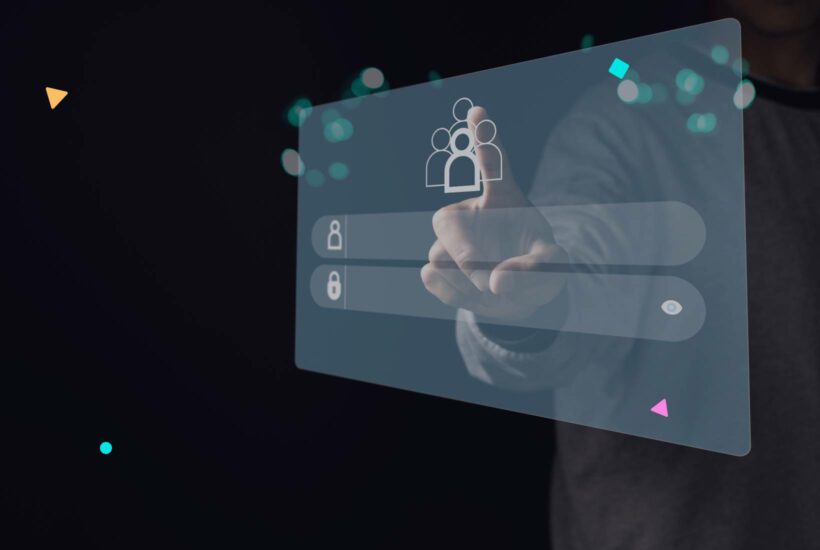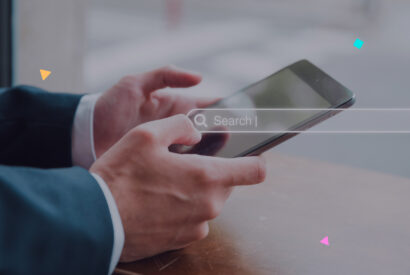Augmented reality in the future of web design

Augmented reality is a technology that will transform the way we interact with the digital world and is already starting to be used in web design to create new experiences on web pages.
In this article, we will explore what augmented reality is and the functionalities it can offer when designing a website.
Tabla de contenidos
What is Augmented Reality?
Augmented reality, also known as AR, is a technology that overlays virtual elements onto the real world.
In web design, it allows users to interact with content in a more original, creative, and immersive way. It’s like being in a Spy Kids movie, hehehe.
In the future, augmented reality will be a key tool to enhance the user experience. This will be particularly useful in online stores, where users can even try out products before making a purchase.
How is Augmented Reality Transforming Web Design?
Next, we will show you some of the ways in which virtual reality can be applied in web design. Get ready to be amazed.
Enhanced User Experience
AR allows users to interact with interface elements in a much more entertaining way, making the experience exponentially better.
For example, it can be used to create interactive animations that are activated by scanning an image or object. It can also provide additional information about products or services on a website.
Product and Service Visualization
Augmented Reality allows users to visualize products in 3D and in real-time, giving potential customers a better idea of how the product will look before making a purchase.
Some companies in the fashion or home decor industry, such as IKEA, are already using this technology to offer customers a glimpse of how furniture will look in their homes. We wouldn’t want half a sofa sticking out of the window, right?
Personalization
Augmented reality allows users to have a personalized and unique experience on the website.
For example, some brands are already using it to display products and services based on user preferences. If a user has been browsing products in a specific category, AR can automatically show similar products that may be of interest.
Improved Navigation
Augmented reality makes it easier for users to navigate the website in a more intuitive and straightforward way.
For example, users can use their mobile camera to explore the environment, where augmented reality overlays relevant information on the screen about nearby places. This is very useful for users looking for restaurants, shops, or tourist attractions in an unfamiliar city.
Another way AR can enhance navigation is through the creation of virtual guides that show how to use a product or service. For example, when buying a coffee machine online, the virtual guide will show you how to use it.
Lead Generation
Thanks to augmented reality, we can generate leads by creating interactive experiences that engage the user.
For example, as we’ve seen before, virtual product or service trials are becoming possible. In this case, one option is to request contact information such as email or phone number in exchange for experiencing the virtual trial, thereby acquiring quality leads.
Disadvantages of Using Augmented Reality on a Website
Although augmented reality has many benefits in web design, there are also some disadvantages to consider.
Hardware Dependency
To use augmented reality, users need a compatible device and a stable internet connection. Not having these requirements will prevent users from experiencing the technology and may result in a negative perception of your brand. And that’s something we don’t want, right? 🙁
Cost
Implementing augmented reality can be quite costly, especially for brands with a limited budget. Additional resources are required to develop this type of content and make the website compatible.
Technological Limitations
Although augmented reality has made significant advancements, there are still limitations in terms of image quality and processing speed. Additional resources are needed to develop this type of content and make it compatible with the website.
Privacy and Security
This technology can collect user data, such as location and contact information, which raises privacy and security concerns. Companies must be transparent about the use of such data and ensure compliance with privacy regulations.
Conclusion
Augmented reality is becoming an increasingly important tool in the world of web design. By providing a more interactive and immersive experience for users, augmented reality can enhance product and service visualization, personalize the user experience, improve site navigation, and generate leads.
Although there are some potential disadvantages, such as development costs and limited compatibility with certain devices, the advantages of augmented reality in web design far outweigh these concerns. With advancing technology and user adoption of augmented reality, it is likely that we will see more and more websites implementing this technology in the future.
Now that you’re excited about the potential of augmented reality in web design, why not dive deeper into the world of digital design? We invite you to read our article on how to create a design system for digital products to gain a broader perspective on how augmented reality can be integrated into larger design systems.


